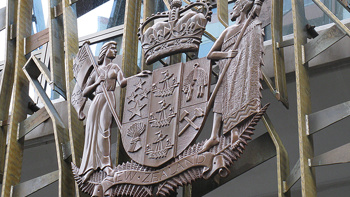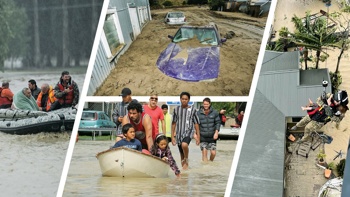The Government has finalised its policy statement on transport. Road safety, regional spending and public transport in all its forms are the big winners.
Government spending on transport will rise from $3.6 billion in 2017/18 to $4 billion in 2018/19. By 2027/28 it will be $4.7 billion.
A key element of the safety strategy will be greater spending on local roads and intersections. There will be a corresponding decrease in spending the former Government's "Roads of National Significance" (RoNS).
As highlighted in the Herald today, the announcement was made by Government ministers at the KiwiRail workshops in Onehunga this afternoon.
Finance minister Grant Robertson said: "We know that productivity and economic growth in New Zealand has been held back by gridlock in our cities and under-investment in regional roads and rail.
"We are fixing this by ensuring that the land transport component of our economic plan supports a modern, growing economy."
Transport minister Phil Twyford added that "Auckland alone loses $1.3 billion a year in productivity to congestion. We will tackle gridlock in Auckland by giving commuters options through major road projects and upgrades such as Mill Road and Penlink.
"Throughout New Zealand, more commuters will be able to leave the car at home because of investment in public transport, walking and cycling. This investment will unleash the potential of our cities."
The Government Policy Statement (GPS) is a revised version of a draft GPS issued in April.
It sets out spending priorities for the whole country, and complements the Auckland Transport Alignment Plan agreed between the Government and the Auckland Council.
Among the key spending decisions:
- $4 billion over 10 years to "establish rapid transit investment".
• 116 per cent increase in funding for walking and cycling infrastructure.
• 99 per cent increase on road safety promotions, alcohol interlocks and promotion of cycling and walking.
• 96 per cent increase in regional transport projects that improve safety, resilience and access.
• 68 per cent increase for public transport, to be spent on operational subsidies and new projects.
• 42 per cent increase on local road improvements.
• 11 per cent less on state highway improvements.
There are four "strategic priorities": safety, value for money, access and the environment.
Under safety, the Government wants to develop "a safe system, free of death and serious injury". It will investigate the Scandinavian Vision Zero approach to road safety, which proposes a systematic approach to eliminating all causes of road fatalities.
The "value for money" goal is to "deliver the right infrastructure and services to the right level at the best cost". The goal under "access" is to provide "increased access to economic and social opportunities", with "transport choice" and "resilience" in the system.
To meet the "environment" goals it will "reduce greenhouse gas emissions as well as adverse effects on the local environment and public health".
Funding changes will be implemented to enable this. The most significant is that part of the Land Transport Fund will be allocated to railways spending. This fund is raised by excise levies on motorists – commonly called fuel taxes.
The scope is quite tight. The GPS says the fund can be used for "improving urban rail services for passengers accessing housing, major employment areas and major metropolitan areas, where demand is outstripping capacity, to improve reliability or to reduce conflict between freight and passenger trains".
It also allows for funding of "existing and new interregional commuter rail services to support housing and employment opportunities".
The other funding change is that the excise levies are rising, by 3.5 cents/litre (plus GST) in each of the next three years. This is not new: it happened in seven of the nine years of the previous Government, and under the last Labour Government. The impact after three years will be an average $5.77 per week (including GST) for each household.
Take your Radio, Podcasts and Music with you









